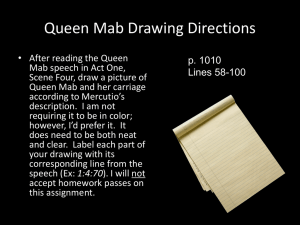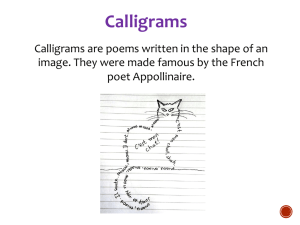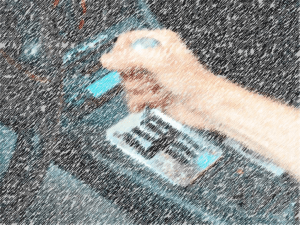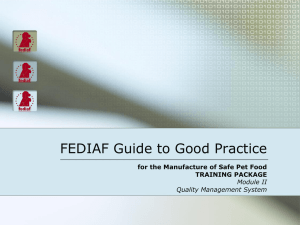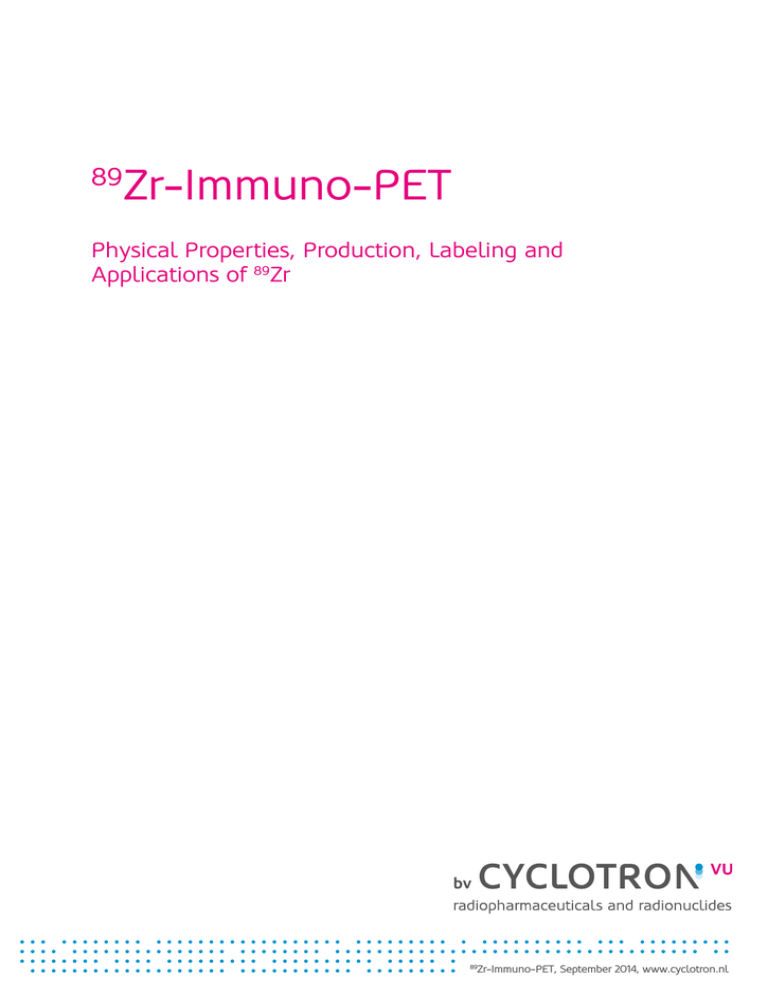
Zr-Immuno-PET
89 Physical Properties, Production, Labeling and
Applications of 89 Zr
Zr-Immuno-PET, September 2014, www.cyclotron.nl
89
Table of Contents
2
Introduction3
89
Zr-immuno-PET3
Biological and physical properties
of zirconium-89 (89Zr)4
Production of
89
Zr4
Choice of the chelator
5
Analysis of the conjugation methods
6
Availability of the DFO-chelators
7
Quality control
8
PET scanner settings for
89
Zr10
Results: preclinical and clinical applications
11
Outlook14
References16
Zr-Immuno-PET, September 2014, www.cyclotron.nl
89
Introduction
Zirconium-89 (89Zr) is a long-lived positron-emitting radionuclide, finding scientific and
medical applications in cancer detection and imaging. 89Zr has a notably longer physical
half-life than the most widely used positron-emitter, fluorine-18 (89Zr, t½ = 78.4 h; 18F, t½=
110 m). This allows the use of 89Zr in positron emission tomography (PET) applications with
monoclonal antibodies (mAbs), which possess long biological half-lives, of up to days.
MAbs are the most rapidly expanding category of therapeutics. The US Food and Drug
Administration (FDA) has approved over 30 mAbs for therapy, mostly for the systemic
treatment of cancer. Annual sales have reached $30 billion in 2008 [1, 2, 3]; in 2010, this
figure has further grown to a massive $48 billion [4, 5].
Immuno-PET - PET-imaging with radiolabeled antibodies or antibody fragments - is a
­n
89
attractive imaging modality at several stages of drug development. With Zr as a p
­ ro­mising
PET-isotope, 89Zr-immuno-PET can offer excellent sensitivity and accurate quantification
of mAbs or mAb-fragments, from mouse to man. 89Zr-immuno-PET may be an ­essential
tool for research institutes, university hospitals and pharmaceutical companies interested
in initiating or participating in the development of mAbs or mAb-fragments.
As 89Zr-immuno-PET has only been developed and approved for clinical studies fairly
recently [6-11], this white paper will provide an overview of the physical properties,
­
­production specifications and applications of 89Zr. Furthermore, two methods for labeling
of mAbs or mAb-fragments with 89Zr will be described. We will discuss the advantages
and disadvantages of both methods, and give a summary of preclinical and clinical study
­results obtained with 89Zr-immuno-PET thus far.
89
3
Zr-immuno-PET
Immuno-PET - the tracking and quantification of radiolabeled mAbs with PET at high
resolution and sensitivity - can be of great value at several stages of mAb development
and applications. Immuno-PET can offer answers to two key questions in targeted therapy:
“Where is the target?”
For instance, immuno-PET can offer information on whether a target (e.g. a receptor or
ligand) is homogeneously present on a tumor. It can also be used to accomplish e
­ fficient
patient selection and determination of optimal dosages, so that side effects can be
­minimized.
“Where is the treatment drug?”
Since the biological behavior of mAbs cannot be exactly predicted by in vitro studies,
this is usually a challenging question. Yet, with immuno-PET, newly developed mAbpharmaceuticals can be tested for their pharmacokinetics and biodistribution. This way,
development of new mAb-pharmaceuticals can be substantially enhanced.
These advantages of immuno-PET have enabled valuable improvement in various stages
of antibody development and clinical applications in the past decade [6, 9, 12]. In addition
to intact, full-sized antibodies, also antibody fragments (e.g. nanobodies, affibodies) and
third generation, non-traditional antibody-like scaffolds have been receiving increasing
attention. Immuno-PET may also play a crucial role in early drug development of nontraditional antibodies.
Zr-Immuno-PET, September 2014, www.cyclotron.nl
89
4
Biological and physical
properties of 89Zr
Zr has some ideal characteristics for labeling of intact mAbs and subsequent visualization
of mAb distribution using PET. Firstly, its physical half-life of 78.4 h matches the biological
half-life of a mAb, as well as the time it needs to perfectly reach optimal target-to-nontarget ratios.
89
Secondly, PET image quality is not disturbed by the decay characteristics of 89Zr. The
­radionuclide emits a positron (β+ particle) with 23% efficiency, in addition to a concomitant
gamma ray emission of 909 keV. It has been shown that the delayed gamma photons do
not interfere with the overall image quality and accurate quantification of the PET image
[6, 13]. Table 1 summarizes the decay data of 89Zr.
Furthermore, 89Zr is a residualizing isotope, which means that it is trapped inside the target
cell after internalization of the mAb. In comparison, iodine-124 (124I, t 1/2= 100.3 h), another
long-lived PET isotope, is released from the target cell after mAb internalization. It is
known that 89Zr residualizes to some extent in organs of mAb catabolism, such as liver,
spleen and kidney.
Table 1:
Decay data of 89Zr.
Radiation type
Energy (keV)
Radiation intensity (%)
β*
395.5
22.74
Auger-L
1.91
79.00
Auger-K
12.7
19.47
γ-annihillation
511.0
45.48
909.15
99.04
1620.8
0.07
1657.3
0.11
1713.0
0.75
1744.5
0.12
+
γ
γ
γ
γ
γ
*= average β+
Production of 89Zr
Zr is mostly produced by a nuclear reaction on natural yttrium, the 89Y(p,n)89Zr reaction,
using a biomedical cyclotron. The average yield is 38-42 MBq/µAh at an incident energy of
12.5 MeV, resulting in batches of 6-8 GBq of 89Zr within 4 to 6 h. With such batch sizes, a
great number of clinical immuno-PET studies can be performed, considering that patients
only receive 37 to 74 MBq of 89Zr-labeled mAb. Purification of 89Zr from 89Y, 88Y and other
radionuclidic impurities [14] can be achieved via affinity chromatography using a hydroxamate column. 89Zr is eluted from the column using 1 M oxalic acid, resulting in a product
with >99.9% radionuclidic purity. In order to omit the potentially toxic oxalic acid from this
process, elution of 89Zr from the hydroxamate column using other acids has been extensively tested. The results have shown that, despite its toxic potential, 1 M oxalic acid is the
most appropriate trans-chelator, as it can be perfectly removed at subsequent purification
steps, during mAb labeling.
89
Zr-Immuno-PET, September 2014, www.cyclotron.nl
89
Choice of the chelator
Zirconium is a hard Lewis acid, and thus prefers hard Lewis bases as donor groups.
­Moreover, zirconium favors an 8-coordination. It has been shown that zirconium (IV) can
form stable complexes with hydroxamates, which are present in desferrioxamine (DFO,
desferal) (Figure 1). To date, DFO is the only chelator known to form stable complexes
with 89Zr. Because DFO has been clinically used for the neutralization of iron and aluminum overload for many years, its application as a chelator in clinical immuno-PET studies
is easily achievable.
DFO consists of three hydroxamate groups, which allows stable complexation of
­zirconium as well as iron, gallium and niobium, and results in a 6-coordination. Several
different DFO-mAb complexes have been described in the literature, as recently reviewed
by Vugts et al. [15]. Next, we will describe the two chelators which are employed in the
clinical setting.
5
Figure 1.
Density Function Theory (DFT)-optimized structure of 8-coordinate complex [89Zr(HDFO)cis-(H2O)2]2+ (3-cis).
Reprinted with permission of the Society of Nuclear Medicine from: Holland JP, Divilov V,
Bander NH, et al. 89Zr-DFO-J591 for ImmunoPET of Prostate-­Specific Membrane Antigen
Expression In Vivo. J Nucl Med. 2010; 51(8): 1293-1300. Figure 1b [20].
­­­
Zr-Immuno-PET, September 2014, www.cyclotron.nl
89
Chelator 1: N-suc-DFO-TFP-ester
6
Until 2010, N-succinyl-desferrioxamine-tetrafluorphenol ester (N-suc-DFO-TFP-ester)
was the chelator of choice for the production of stable 89Zr-labeled mAb conjugates [14].
For the preparation of N-suc-DFO-TFP-ester, DFO is first reacted with succinic anhydride,
resulting in N-succinyl-DFO (N-suc-DFO). In a second step, DFO is temporarily filled with
iron, in order to prevent the reaction of TFP-ester with one of the hydroxamate groups
of DFO. Finally, in a third step, the acid groups become activated to Fe-N-suc-DFO-TFPester. The resulting ester can be stored at -80°C in acetonitrile for at least one year. The
conjugation of Fe-N-suc-DFO-TFP-ester to the lysine residues of a mAb requires a pH of
approximately 9.5. In the next step, the iron (Fe) has to be removed from the DFO, which
can be achieved with a 100-fold molar excess of ethylenediaminetetraacetic acid (EDTA)
at pH 4.2-4.5.
Chelator 2: DFO-Bz-NCS
In 2010, a new DFO-based chelator was introduced: p-isothiocyanatobenzyl-desferrioxamine (DFO-Bz-NCS) [16, 17], patented by Macrocyclics (www.macrocyclics.com).
DFO-Bz-NCS is prepared by the reaction of DFO with 1,4-phenylendiisothiocyanate. The
isothiocyanate group is frequently used as reactive group in the conjugation to mAbs, for
instance with DOTA, which has been safely employed in clinical studies for many years.
Just like N-suc-DFO-TFP-ester, DFO-Bz-NCS is also conjugated to the lysine groups
of a mAb. An important difference in the new conjugation procedure is the absence of
the iron removal step at low pH. Avoiding the low pH step is a major improvement when
dealing with pH-sensitive proteins, as recently shown for 89Zr-nanocolloidal albumin [18].
With both chelators, coupling with 89Zr is achieved by trans-chelation of 89Zr from oxalic
acid to DFO at neutral pH (between 6.8-7.2), and almost complete incorporation can be
achieved after 30-60 minutes.
Analysis of the conjugation methods
Table 2 shows an overview of the main advantages and disadvantages of the two DFOchelators for conjugation to mAbs. A convenience of using Fe-N-suc-DFO-TFP-ester is
that chelator-to-mAb ratios can be easily determined by size exclusion high performance
liquid chromatography (SEC-HPLC) when applying the specific wavelength of Fe (430
nm); the same is not possible with the DFO-Bz-NCS chelator, due to the absence of Fe.
Using DFO-Bz-NCS requires careful consideration of certain issues. The first important aspect is the way how DFO-Bz-NCS is added to the mAb-solution. If added swiftly,
without shaking or proper mixing, DFO-Bz-NCS, which is dissolved in DMSO, can cause
formation of mAb-aggregates. For this reason, we state [16, 17] that DFO-Bz-NCS should
be added stepwise to the mAb-solution.
A second aspect observed when using the DFO-Bz-NCS chelator concerns the s­ tability
of the radiolabeled mAb upon storage. Buffers containing Cl- should be avoided, since
they cause detachment of 89Zr from the mAb, due to radiation-induced formation of
­hypochlorite. In turn, this compound reacts very effectively with the bis-thiourea unit of
the new linker, therefore the use of a 0.25 M sodium acetate buffer is strongly recommended.
Zr-Immuno-PET, September 2014, www.cyclotron.nl
89
Availability of the DFO-chelators
Both chelators are commercially available: Macrocyclics trades Df-Bz-NCS, whereas the
Fe-N-suc-DFO-TFP-ester was added to the portfolio of ABX (www.ABX.de) in March 2012.
On request, each company can produce their DFO chelator at GMP-compliant grade.
Consequently, research groups and pharmaceutical companies can now choose their
­desired labeling method according to the protein they investigate.
7
Table 2:
Comparison of the two DFO-chelators for conjugation to mAbs.
Synthesis step Fe-N-suc-DFO- Remarks
TFP-ester
Conjugation
mAb
30’ at
pH 9.5-9.7
DFO-Bz-NCS
Typically: two-fold 30’ at pH 9.0
molar excess of
DFO-TFP-ester
results in 1-1.5
DFO-groups
coupled per mAb
Quality control: Size exclusion
conjugation ef- HPLC at 280 nm
and 430 nm
ficiency
No HPLC
­analysis
­possible
Removal of Fe
n.a.
30’ at pH 4.2-4.5
Eluent 0.25 M
NaOAc pH 5.5
Zr labeling of 30-60’ in HEPES
modified mAb buffer at pH 7
30-60’ in
HEPES buffer
at pH 7
Purification via Eluent 0.9%
PD-10 column NaCl with 5 mg/
ml gentisic acid,
pH 5.5
Different anti-oxidizing agents have
been tested; gentisic acid was found
as most favorable
Adding of DFOBz-NCS should be
done stepwise to
avoid aggregation
or precipitation of
mAb.
Typically: threefold molar excess
of DFO-Bz-NCS
results in 0.30.9 DFO-groups
coupled per mAb
Determination via
MS is possible, or
by titration with
known amount
of cold zirconium
oxalate [ref 19]
Purification via Eluent 0.9%
PD-10 column NaCl
89
Remarks
Eluent 0.25 M
NaOAc, with 5
mg/ml gentisic
acid, pH 5.5
In this step, 0.9%
NaCl may be used
as eluent
Use of Cl--ions
should be avoided
Abbreviations: DFO = desferrioxamine, desferal; HPLC = High Performance Liquid
­Chromatography; n.a. = not applicable; NaOAc = sodium acetate; QC = quality control.
Zr-Immuno-PET, September 2014, www.cyclotron.nl
89
Quality control
8
In order to fulfill clinical requirements, it is important that 89Zr-labeled mAbs are produced
under current good manufacturing practice (cGMP) [21]. When a 89Zr-labeled mAb has
been prepared, it is important to execute the following tests:
1) Appearance: a clear and colorless solution should be observed.
2)Chelator-to-mAb ratio: though varying according to the applied DFO-chelator, no more
than two to three DFO-groups per mAb molecule should be attached, in average, to
preserve immunoreactivity and pharmacokinetics of the radiolabeled mAb.
3)Radiochemical purity: ideally, this should be > 95%. Aggregate or dimer formation
caused by modification and radiolabeling, as well as free 89Zr and 89Zr-DFO, should
be < 5%. HPLC can be employed to evaluate both criteria, while instant thin layer
­chromatography (ITLC) can only be used to determine the percentage of free 89Zr and
89
Zr-DFO.
4)Immunoreactivity: this can be examined with a binding assay (according to Lindmo et al.
[22]) or an ELISA assay [23]. Immunoreactivity should not be affected during modification and subsequent labeling.
5)Apyrogenicity: concentration of endotoxins in the product should be minimized. An
­assay can be performed, for instance using an endosafe PTS reader.
6)Sterility: the final product should be filtered through a 0.22 µm filter. The integrity of
the used filter should be tested with a bubble point test. Due to time constraints, it is
unfeasible to perform sterility tests for each product. However, during validation experiments, it is important to obtain sterility information. Moreover, a media fill test can be
executed on a regular basis.
As can be seen from the list above, all quality controls are regular tests for a dedicated
radiolabeling facility. Thus, implementing these quality controls for 89Zr-immuno-PET in
laboratories and quality systems should be fairly straightforward.
Zr-Immuno-PET, September 2014, www.cyclotron.nl
89
Cyclotron 89Zr production
Modification of mAb with DFO
Purification of 89Zr
Purification of modified mAb
Zr-radiolabeling of modified mAb and purification of 89Zr-labeled-mAb
89
Quality control
HPLC
(High-performance liquid
chromatography)
TLC
(Thin layer
chromatography)
Binding assay
Pyrogen test
Figure 2: Preparation of clinical grade 89Zr-DFO mAbs.
Zr-Immuno-PET, September 2014, www.cyclotron.nl
89
Settings for clinical PET/CT scanners
10
The minimum standard for the acquisition and interpretation of PET and PET/CT scans
with [18F]-FDG was well described by Boellaard et al. (2010) [24]. The published guideline
­allows physicians and physicists to perform, interpret and document quantitative [18F]-FDG
PET/CT examinations.
Until recently, however, clear reconstruction algorithms for newly developed PETcompounds, using PET-radionuclides other than 18F, were missing. In a multicenter study
of Makris et al. [25], three types of clinical PET/CT scanners were cross-calibrated using
a known 89Zr compound. Table 3 gives recommendations for these three different ­clinical
PET/CT-scanner types, as well as information for users on quantifying obtained 89Zrimmuno-PET images.
Table 3:
Recommended reconstruction algorithms and settings for
scanners*.
89
Zr-labeled studies in PET/CT
Type of PET-CT Reconstruction
scanner
algorithm
Iteration
­subsets
Matrix
size
Slice thickness (mm)
Smoothing
(mm)
Biograph mCT
ToF
PSF-ToF**
21_3
256 x 256
3.0
8.0
Philips TF
Gemini
Blob-OSEMToF***
33_3
144 x 144
4.0
5.0
GE Discovery690
OSEM-ToF
18_3
128 x 128
3.3
6.4
All scans were performed with 5 min per bed position
Point Spread Function-Time of Flight.
***
Blob-Ordered Subsets Expectation Maximization-Time of Flight (WB CTAC NAC).
*
**
Zr-Immuno-PET, September 2014, www.cyclotron.nl
89
Results: preclinical and clinical applications
To date, more than 20 preclinical studies have been published using 89Zr (Table 4), in
­addition to more than 25 clinical 89Zr-immuno-PET studies. The first clinical study with
89
Zr-immuno-PET was reported by Börjesson et al. [7] in 2006. In this feasibility study,
20 head and neck cancer patients received 89Zr-N-suc-DFO-U36. This study showed that
­primary tumors, as well as lymph node metastasis, can be detected using 89Zr-immunoPET, and that 89Zr-N-suc-DFO-U36 can be safely applied to patients.
After this first-in-human-study, other clinical trials using 89Zr-immuno-PET were
­initiated. An overview of the present clinical trials can be seen in Table 5.
As an example, we consider the imaging hub of Roche with medical oncology and
nuclear medicine departments of three Dutch University Medical Centers. Thanks to this
collaboration, the various phases of translational research can be completed in a more effective and efficient manner. One of the studies within this hub is an open-label, two-arm
study that will assess the pharmacokinetics, pharmacodynamics, safety and efficacy of an
anti-CD44 antibody in patients with metastatic and/or locally advanced CD44-expressing
malignant solid tumors. In part A, cohorts of patients receive anti-CD44 antibody intravenously at escalating doses, while in Part B, patients receive 89Zr-labeled anti-CD44
antibody, followed by ‘cold’ antibody.
A second study within this hub is a phase II molecular imaging trial of RO5323441, a mAb
directed against the placental growth factor (PlGF), in patients with recurrent Glioblastoma Multiforma (GBM) treated with bevacizumab, a mAb directed against vascular endothelial growth factor (VEGF). Both VEGF and PlGF are involved in tumor growth, enabling
the development of tumor vasculature. Treatment consists of bevacizumab administration
every two weeks. Patients receive 89Zr-labeled anti-PlGF antibody on days -3 and 11 after
the first bevacizumab cycle. A brain PET-scan is performed two hours post-injection of
the radiolabeled mAb. In addition, a whole body PET-scan is performed on days 1 and
15. Within this study, the investigators mainly aim to quantify the amount of anti-PlGF
antibody in the GBM lesions; as a second objective, accumulation in normal, non-tumor
organs is assessed, as well as the possibility that bevacizumab influences anti-PlGF antibody penetration in tumor lesions.
11
Zr-Immuno-PET, September 2014, www.cyclotron.nl
89
12
Table 4:
Overview of published* preclinical 89Zr-immuno-PET studies.
* From PubMed search in August 2012.
#
Drug
1
89
Target
References
Zr-ranibizumab
VEGF A
26
2
89
Zr-R1507
IGF-1R
27
3
89
Zr-J591
PSMA
28
4
89
Zr-cG250
CA IX
29
5
89
Zr-cmAb U36
CD44v6
13
6
89
Zr-bevacizumab VEGF
30
7
89
Zr-DN30
c-Met
31
8
89
Zr-fresolimumab
TGF-β
32
9
89
Zr-FK-3PEG
αvβ3 integrin
33
10
89
Zr-FK
αvβ3 integrin
33
11
89
Zr-[FK](2)-3PEG
αvβ3 integrin
33
12
89
Zr-[FK]
αvβ3 integrin
33
13
89
Zr- trastuzumab
HER2
34
14
89
Zr-cetuximab
EGFR
35
15
89
Zr-TRC105
CD105
36
16
89
Zr-hRS1
EGP-1, TROP2
37
17
89
Zr-7E11
PSMA or NAALADase 38
18
89
Zr-7D12
EGFR
39
19
89
Zr-cG250-F(ab’)2
CA IX
40
20
89
Zr-panitumumab
EGFR
41
21
Zr-nanocolloidal
albumin
sentinel node
17
22
89
anti-B-cell
42
89
Zr-anti-B220
Abbreviations: CA IX = carbonic anhydrase IX; CD44v6 = splice variant 6 of CD44; EGFR =
epidermal growth factor receptor; EGP-1 = TROP2 = epithelial/carcinoma glycoprotein;
HER2 = human epidermal growth factor receptor 2; IGF-1R = insulin-like growth factor 1
receptor; NAALADase = N-acetyl α-linked acidic dipeptidase; PSMA = prostate-specific
membrane antigen; TGF-β = transforming growth factor β; VEGF A = vascular endothelial
growth factor A.
Zr-Immuno-PET, September 2014, www.cyclotron.nl
89
Table 5:
Currently known* clinical 89Zr-immuno-PET studies.
*= Adapted from clinicaltrials.gov and personal communications.
Drug
13
Target/
Effect of
Cancer/
Disease
No
Dose
patient
Institute
[ref]
Country
1
89
Zr-cmAb-U36
CD44v6
HNSCC
20
74 MBq/ 10 mg
VUmc
[6,7]
NL
2
89
Zr-huJ591
PSMA
Prostate
50
unknown
MSKCC
USA
3
89
Zr-RO5323441
PlGF
Glioblastoma
7
x MBq/ 5 mg
UMCG
NL
4
89
Zr-bevacizumab VEGF/
HSP90
Breast
11
unk
UMCG
NL
5
89
Zr-trastuzumab
HER2
Breast
11
unknown
UMCG [9,12]
NL
6
89
Zr-trastuzumab
HER2/
HSP90
Breast
11
unknown
UMCG
NL
7
89
Zr-bevacizumab VEGF
Neuroendocrine
14
37 MBq/ 5 mg
UMCG
NL
8
89
Zr-GC1008
TGF-β
Glioblastoma
12
37 MBq/ 5 mg
UMCG
NL
8b
89
Zr-GC1008
TGF-β
Glioblastoma
12-20
37 MBq/ 5 mg
UMCG
NL
9
89
Zr-bevacizumab VEGF
Renal Cell CA
14
37 MBq/ 5 mg
UMCG
NL
10
89
Zr-bevacizumab VEGF
Renal Cell CA
26
unknown
UMCG
NL
11
89
Zr-bevacizumab VEGF
Breast
23
37 MBq/ 5 mg
UMCG
NL
12
89
Zr-bevacizumab VEGF
Von HippelLindau
30
unknown
UMCG
NL
13
89
Zr-RO542908
CD44
CD44-positive
25-30
37 MBq/ 1 mg
Roche
NL
14
89
Zr-trastuzumab
HER2/
T-DM1
Breast
60
unknown
Bordet
B/NL
15
89
Zr-trastuzumab
HER2
Breast
20
unknown
Bordet
B
16
89
Zr-cetuximab
EGFR
Stage IV CA
12
unknown
Maastricht
NL
17
89
Zr-rituximab
CD20
Non hodgkin
34
74 MBq/ 5 mg
Bordet
B
18
89
Zr-rituximab
CD20
Rheumatology
15
18 MBq/ 10 mg
VUmc
NL
19
89
Zr-cetuximab
EGFR
NSCLC
74 MBq/ 5 mg
VUmc
NL
20
89
Zr-bevacizumab VEGF
Glioblastoma (Ped) 5
18-37 MBq/
2-5 mg
VUmc
NL
21
89
Zr-cetuximab
EGFR
HNSCC
268
unknown
VUmc
NL/GB/
S/F/E
22
89
Zr-rituximab
CD20
MS
8
18 MBq/ 10 mg
VUmc
NL
23
89
Zr-ofatumumab CD20
Lymphoma
15
74 MBq/ 10 mg
VUmc
NL
24
89
Zr-rituximab
CD20
Lymphoma
30
74 MBq/ 10 mg
VUmc
NL
25
89
Zr-cetuximab
EGFR
Colorectal
38
37 MBq/ 10 mg
VUmc
NL
26
89
Zr-bevacizumab VEGF/FAZA
NSCLC
15-20
37 MBq/ 5 mg
VUmc
NL
27
89
Zr-nanocoll
5-10
5 MBq
VUmc
NL
sentinel node HNSCC
Abbreviations: B = Belgium; CA = carcinoma; EGFR = epidermal growth ­factor ­receptor; F = France; FAZA =
1-α-D-(5-Fluoro-5-deoxyarabinofuranosyl)-2-nitroimidazole; GB = Great Britain; HER2 = human epidermal
growth factor receptor 2; HNSCC = head and neck squamous cell carcinoma; HSP90 = heat shock protein-90;
MS = multiple sclerosis; MSKCC = Memorial Sloan-Kettering Cancer Center; NL = The Netherlands; NSCLC
= non-small cell lung cancer; Ped = pediatrics; PlGF = Placental growth factor; PSMA = prostate-specific
membrane antigen; S = Sweden; T-DM1 = trastuzumab ­emtansine; TGF-β = transforming growth factor β;
UMCG = University Medical Center Groningen; USA = United States of America; VEGF = vascular endothelial
growth factor; VUmc = VU University Medical Center.
Zr-Immuno-PET, September 2014, www.cyclotron.nl
89
Outlook
14
Molecular imaging with the PET tracer 89Zr may considerably accelerate drug development. Major players within the pharmaceutical industry now realize that immuno-PET
offers excellent sensitivity and accurate quantification in PET-studies using 89Zr-labeled
mAbs or mAb-fragments, allowing quick translation from mouse to man [43]. Several
pharmaceutical companies have already shown their interest in 89Zr-immuno-PET, with the
first clinical trials currently ongoing (e.g. Roche hub). What is more, academic ­biomedical
research institutions are encouraged to initiate 89Zr-immuno-PET studies.
89
Zr has been produced at clinical grade since 2008, and can be obtained on a weekly
basis. Besides the worldwide delivery of 89Zr, also the two DFO chelators are now
­commercially available. With these ingredients in place, it is now possible for research
groups and pharmaceutical companies to easily set up 89Zr-immuno-PET in their facilities.
In addition, a 3-day training on 89Zr-immuno-PET can be attended at BV Cyclotron VU,
which gives trainees the tools to start their own 89Zr-immuno-PET studies within a few
months (for more details, see: 2cyc.eu/training).
Thus, the physical properties of 89Zr, its worldwide availability, the improved situation of
commercially available chelators, the ease of use in standard laboratory settings, and the
impressive results from preclinical and clinical applications make 89Zr in immuno-PET an
important new technology for research institutes, university hospitals and pharmaceutical
companies.
Zr-Immuno-PET, September 2014, www.cyclotron.nl
89
Company profile
BV Cyclotron VU is a private company located in the campus of the VU University Medical
Center in Amsterdam, the Netherlands. Since 1987, BV Cyclotron VU has been producing
SPECT and PET radiopharmaceuticals and PET radiochemicals for medical diagnostics and
research. BV Cyclotron VU produces [18F]FDG, [ 18F ]FCH, [ 18F ]Florbetaben (NeuraCeq TM), 124I,
89
Zr and other 18F-labeled compounds for the PET community, as well as 123I and 81Rb/81mKr
generators for the SPECT community.
In Amsterdam, BV Cyclotron VU runs one of the first commercial production sites of
89
Zr in the world. Academic establishments such as the Memorial Sloan-Kettering Cancer
Center (NY, USA), U
­ niversity of Wisconsin (Madison, WI, USA) and Paul Scherrer Institute
(Zurich, Switzerland) produce 89Zr on request and for research purposes only.
BV Cyclotron VU’s mission is to make a wide range of PET compounds available. Our
goal is to make products of the highest pharmaceutical quality, and to be a highly ­reliable
supplier of those products. To achieve this, BV Cyclotron VU continuously invests in the
best equipment available on the market. The products are delivered by our worldwide
distribution partners (see: 2cyc.eu/distributors). The department of Nuclear Medicine and
PET Research of the VU University Medical Center is our partner in research and development of new PET tracers.
15
www.cyclotron.nl
Zr-Immuno-PET, September 2014, www.cyclotron.nl
89
References
16
1
Maggon K. Monoclonal antibody “gold rush”. Curr. Med. Chem. 2007;14: 1978-1987.
2 Lawrence S. Billion dollar babies-biotech drugs as blockbusters. Nat Biotechnol.
2007;­25:380-382.
3 Reichert JM. Monoclonal antibodies as i­nnovative therapeutics. Curr Pharm Biotechnol. 2008;9:423-430.
4 Reichert JM. Antibody-based therapeutics to watch in 2011. MABs. 2011;3:76-99.
5 Maggon K. Top ten monoclonal antibodies. Knol 2012.
6 Börjesson PK, Jauw YW, de Bree R, Roos JC, Castelijns JA, et al. Radiation dosimetry of
89
­ Zr-­labeled chimeric monoclonal antibody U36 as used for immuno-PET in head and
neck ­cancer patients. J Nucl Med. 2009;50:1828–1836.
7 Börjesson PKE, Jauw YWS, Boellaard R, de Bree R, Comans EFI, Roos JC, et al. Performance of immuno-positron emission tomography with zirconium-89-labeled chimeric
monoclonal antibody U36 in the detection of lymph node metastases in head and
neck cancer patients. Clin Cancer Res 2006;12:2133-2140.
8 Dijkers EC, Oude Munnink TH, Kosterink JG, Brouwers AH, Jager PL, et al. Bio­
distribution of 89Zr-trastuzumab and PET imaging of HER2-positive lesions in patients
with metastatic breast cancer. Clin Pharmacol Ther. 2010 May;87:586-592.
9 Gaykema SB, Brouwers AH, Hovenga S, Lub-de Hooge MN, de Vries EG et al.
­Zirconium-89-trastuzumab positron emission tomography as a tool to solve a clinical
dilemma in a patient with breast cancer. J Clin Oncol. 2012 Feb 20;30:e74-5.
10 Muylle K, Jules Bordet institute, Brussels (personal communication).
11 Rizvi SN, Visser OJ, Vosjan MJWD, van Lingen A, Hoekstra OS, et al. Biodistribution,
radiation dosimetry and scouting of 90Y-ibritumomab tiuxetan therapy in patients with
relapsed B-cell non-Hodkin’s lymphoma using 89Zr-ibritumomab tiuxetan and PET.
Eur J Nucl Med Mol Imaging. 2012;39:512-520.
12 Nagengast WB, de Korte MA, Oude Munnink TH, Timmer-Bosscha H, den Dunnen WF,
et al. 89Zr-bevacizumab PET of early antiangiogenic tumor response to treatment with
HSP90 i­nhibitor NVP-AUY922. J Nucl Med. 2010;51:761-767.
13 Verel I, Visser GWM, Boellaard R, Boerman OC, van Eerd J, Snow GB, Lammertsma AA,
van Dongen GAMS. Quantitative 89Zr immuno-PET for in vivo scouting of 90Y-labeled
mono­clonal antibodies in xenograft-bearing nude mice. J Nucl Med. 2003;44:1663-70.
14 Verel I, Visser GWM, Boellaard R, Stigter-van Walsum M, Snow GB et al. 89Zr immuno-PET:
comprehensive procedures for the production of 89Zr-labeled monoclonal antibodies.
J Nucl Med 2003;44:1271-1281.
15 DJ Vugts, GWM Visser, GAMS van Dongen. 89Zr-PET in the development and application of monoclonal antibodies and other protein therapeutics. Current Topics in
­Medicinal Chemistr y 2012, submitted.
16 Perk LR, Vosjan MJWD, Visser GWM, Budde M, Jurek P, et al. p-Isothiocyanatoben­­­zyldesferrioxamine: a new bifunctional chelate for facile radiolabeling of monoclonal
antibodies with zirconium-89 for immuno-PET imaging. Eur J Nucl Med Mol Imaging
2009;37:250-259.
17 Vosjan MJWD, Perk LR, Visser GWM, Budde M, Jurek P, et al. Conjugation and radiola-
Zr-Immuno-PET, September 2014, www.cyclotron.nl
89
beling of monoclonal antibodies with zirconium-89 for PET imaging using the bifunctional chelate p-isothiocyanatobenzyl-desferrioxamine. Nat Protoc 2010;5:739-743.
18 Heuveling DA, Visser GWM, Baclayon M, et al. 89Zr-nanocolloidal albumin-based PET/CT
lymphoscintigraphy for sentinel node detection in head and neck cancer: preclinical results.
J. Nucl. Med. 2011;52: 1580-1584.
17
19 Meares CF, McCall MJ, Reardan DT, Goodwin DA, Diamanti CI, McTique M. Conju­
gation of a
­ ntibodies with bifunctional chelating agents: isothiocyanate and bromoacetamide reagents, methods of analysis, and subsequent addition of metal ions. Anal
Biochem 1984;142:68-78.
20 Holland JP, Divilov V, Bander NH, Smith-Jones PM, Larson SM, Lewis JS. 89Zr-DFO-J591
for immunoPET of prostate-specific membrane antigen expression in vivo. J Nucl Med.
2010 Aug;51:1293-1300.
21 Compounding of radiopharmaceuticals. Draft Monographs and General Texts for
­Comment. PHARMEUROPA Vol. 23, No. 4, October 2011, 5.19.
22 Lindmo T, Boven E, Cuttitta F, Fedoroko J, Bunn PA Jr. Determination of the immunoreactive fraction of radiolabeled monoclonal antibodies by linear extrapolation to
binding at infinite antigen excess. J Immunol Methods 1984;72:77-89.
23 Collingridge DR, Carroll VA, Glaser M, Aboagye EO, Osman S, Hutchinson OC, et
al. The d
­evelopment of [124I]iodinated-VG76e: a novel tracer for imaging vascular
endothelial growth factor in vivo using positron emission tomography. Cancer Res
2002;60:5912-5919.
24 Boellaard R, O’Doherty MJ, Weber WA, et al. FDG PET and PET/CT: EANM pro­
cedure guidelines for tumour PET imaging: version 1.0. Eur J Nucl Med Mol Imaging.
2010;37:181-200.
25 Makris NE, Boellaard R, Visser EP, de Jong JR, et al. Multi-centre 89Zr cross calibration of PET/CT scanners: assessment of image quality and quantitative accuracy. Oral
presentation at European Association of Nuclear Medicine Conference, October 2012.
26 Nagengast WB, Lub-de Hooge MN, Oosting SF, den Dunnen WF, Warnders FJ, Brouwers AH, de Jong JR, Price PM, Hollema H, Hospers GA, Elsinga PH, Hesselink JW,
Gietema JA, de Vries EG. VEGF-PET imaging is a noninvasive biomarker showing differential changes in the tumor during sunitinib treatment. Cancer Res. 2011;71:143–153.
27 Heskamp S, van Laarhoven HW, Molkenboer-Kuenen JD, Franssen GM, VersleijenJonkers YM, Oyen WJ, van der Graaf WT, Boerman OC. ImmunoSPECT and immunoPET
of IGF-1R expression with the radiolabeled antibody R1507 in a triple-negative breast
cancer model. J Nucl Med. 2010;51:1565–1572.
28 Holland JP, Divilov V, Bander NH, Smith-Jones PM, Larson SM, Lewis JS. 89Zr-DFO-J591
for immunoPET of prostate-specific membrane antigen expression in vivo. J Nucl Med.
2010;51:1293–1300.
29 Brouwers A, Verel I, van Eerd J, Visser G, Steffens M, Oosterwijk E, Corstens F, Oyen
W, Van Dongen GAMS, Boerman O. PET radioimmunoscintigraphy of renal cell cancer
using 89Zr-labeled cG250 monoclonal antibody in nude rats. Cancer Biother Radiopharm. 2004;19:155–163.
30 Nagengast WB, de Vries EG, Hospers GA, Mulder NH, de Jong JR, Hollema H, Brouwers AH, van Dongen GAMS, Perk LR, Lub-de Hooge MN. In vivo VEGF imaging
with radiolabeled bevacizumab in a human ovarian tumor xenograft. J Nucl Med.
2007;48:1313–1319.
Zr-Immuno-PET, September 2014, www.cyclotron.nl
89
18
31 Perk LR, Stigter-van Walsum M, Visser GWM, Kloet RW, Vosjan MJWD, Leemans CR,
Giaccone G, Albano R, Comoglio PM, van Dongen GAMS. Quantitative PET imaging of
Met-expressing human cancer xenografts with (89)Zr-labelled monoclonal antibody
DN30. Eur J Nucl Med Mol Imaging. 2008;35:1857–1867.
32 Oude Munnink TH, Arjaans ME, Timmer-Bosscha H, Schroder CP, Hesselink JW,
­Vedelaar SR, Walenkamp AM, Reiss M, Gregory RC, Lub-de Hooge MN, de Vries EG.
PET with the 89Zr-labeled transforming growth factor-beta antibody fresolimumab in
tumor models. J Nucl Med. 2011;52:2001–2008.
33 Jacobson O, Zhu L, Niu G, Weiss ID, Szajek LP, Ma Y, Sun X, Yan Y, Kiesewetter DO,
Liu S, Chen X. MicroPET imaging of integrin αvβ3 expressing tumors using 89Zr-RGD
peptides. Mol I­maging Biol. 2011 Dec;13:1224-33.
34 Dijkers EC, Kosterink JG, Rademaker AP, Perk LR, van Dongen GAMS, Bart J, de Jong JR,
de Vries EG, Lub-de Hooge MN. Development and characterization of clinical-grade
89
Zr-­trastuzumab for HER2/neu immunoPET imaging. J Nucl Med. 2009;50:974–981.
35 Aerts HJ, Dubois L, Perk L, Vermaelen P, van Dongen GAMS, Wouters BG, Lambin P. Disparity
between in vivo EGFR expression and 89Zr-labeled cetuximab uptake assessed with PET.
J Nucl Med. 2009;50:123-131.
36 Hong, H, Severin GW, Yang Y, Engle JW, Zhang Y, Barnhart TE, Liu G, Leigh BR, Nickles RJ,
Cai W. Positron emission tomography imaging of CD105 expression with (89)Zr-Df-TRC105.
Eur J Nucl Med Mol Imaging. 2011;39:138-148.
37 van Rij CM, Sharkey RM, Goldenberg DM, Frielink C, Molkenboer JD, Franssen GM,
van Weerden WM, Oyen WJ, Boerman OC. Imaging of prostate cancer with immunoPET and immuno-SPECT using a radiolabeled anti-EGP-1 monoclonal antibody. J Nucl
Med. 2011;52:1601–1607.
38 Ruggiero A, Holland JP, Hudolin T, Shenker L, Koulova A, Bander NH, Lewis JS, Grimm
J. ­Targeting the internal epitope of prostate-specific membrane antigen with 89Zr-7E11
­immuno-PET. J Nucl Med. 2011;52:1608–1615.
39 Vosjan MJWD, Perk LR, Roovers RC, Visser GWM, Stigter-van Walsum M, van Bergen
en H
­ enegouwen PMP, van Dongen GAMS. Facile labelling of an anti-epidermal
growth factor receptor Nanobody with 68Ga via a novel bifunctional desferal chelate
for immuno-PET. Eur J Nucl Med Mol Imaging. 2011;38:753–763.
40 Hoeben BA, Kaanders JH, Franssen GM, Troost EG, Rijken PF, Oosterwijk E, van
­Dongen GAMS, Oyen WJ, Boerman OC, Bussink J. PET of hypoxia with 89Zr-labeled
cG250-F(ab’)2 in head and neck tumors. J Nucl Med. 2010;51:1076–1083.
41 Nayak TK, Garmestani K, Milenic DE, Brechbiel MW. PET and MRI of metastatic
­peritoneal and pulmonary colorectal cancer in mice with human epidermal growth
factor receptor ­1-targeted 89Zr-labeled panitumumab. J Nucl Med. 2012;53:113–120.
42 Walther M, Gebhardt P, Grosse-Gehling P, Würbach L, Irmler I, Preusche S, Khalid M,
Opfermann T, Kamradt T, Steinbach J, Saluz HP. Implementation of 89Zr production and
in vivo imaging of B-cells in mice with 89Zr-labeled anti-B-cell antibodies by small
animal PET/CT. Appl Radiat Isot. 2011 Jun;69:852-857.
43 Williams S. Tissue distribution studies of protein therapeutics using molecular probes:
­Molecular imaging. AAPS J 2012 Sep;14:389-399.
Zr-Immuno-PET, September 2014, www.cyclotron.nl
89
Imprint
19
Text
Maria Vosjan, PhD, Lars R. Perk, PhD, Sybe I. Rispens, PhD
Editing and production
Knowledgeatwork (www.knowledgeatwork.eu)
Infographic and layout
WERNERWERKE GbR
Zr-Immuno-PET, September 2014, www.cyclotron.nl
89
This White Paper and other downloads are available at:
http://2cyc.eu/download
Zr-Immuno-PET, September 2014, www.cyclotron.nl
89


